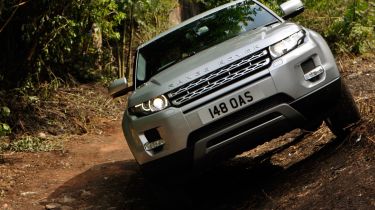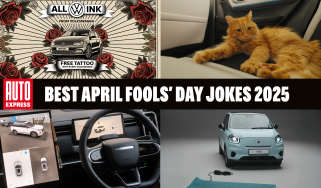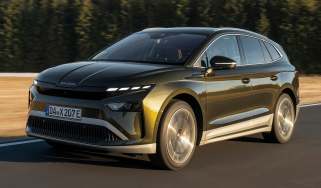Range Rover Evoque off-road
It’s the toughest test yet for Auto Express’s Car of the Year, as we hit the off-road trails

Don’t think for one minute that the Evoque is merely a fashion statement – it’s far more accomplished when the going gets rough than the more utilitarian Freelander 2. And while it lacks the low-ratio gearbox, air-suspension and greater ground clearance of the bigger Land Rover Discovery 4, it’s still more than up to dealing with any type of terrain that owners are ever likely to point it at.
The furthest most Range Rover Evoque buyers are ever likely to venture off-road is the overflow car park at the races. But the 4x4 offers the go-anywhere capability you would expect from a vehicle wearing the legendary badge. How do we know this? Because we’ve given our Car of the Year 2011 its ultimate off-road test.
While the Evoque can be specified with front-wheel drive, most buyers will opt for 4WD. This uses the Freelander’s Haldex system, which shuffles torque between the front and rear axles to ensure power is sent where it’s needed most.
Video: watch part one of our video review of the Range Rover Evoque
[[{"type":"media","view_mode":"content_narrow","fid":"68683","attributes":{"alt":"","class":"media-image"}}]]
All four-wheel-drive Evoques are equipped with Land Rover’s excellent Terrain Response system – although, unlike on other models in the range, it’s operated by pressing a button rather than turning a dial.
Used - available now

2023 Land Rover
Range Rover Evoque
22,795 milesManualDiesel2.0L
Cash £23,100
2023 Land Rover
Range Rover Evoque
7,921 milesAutomaticPetrol1.5L
Cash £33,600
2023 Land Rover
Range Rover Evoque
50,260 milesAutomaticDiesel2.0L
Cash £23,300
2023 Land Rover
Range Rover Evoque
27,442 milesAutomaticPetrol1.5L
Cash £24,387The set-up gives owners a choice of three off-road modes: gravel/grass, muddy ruts and sand. Each adjusts the sensitivity of the ESP system, as well as the settings of the all-wheel drive, throttle and automatic box.
The electronics also alter the weight and sensitivity of the steering for greater control and precision, and to reduce the risk of the wheel being ripped from your hands if you hit a rut.
All this means novices can tackle the trickiest of obstacles. Yet the most confidence-inspiring gadget is Land Rover’s renowned Hill Descent Control set-up, which leaves you to steer while the car deals with any steep terrain.
You may think the Evoque’s go-anywhere credentials would be compromised in this sportiest model in the range. However, it’s more capable over the rough stuff than the current Freelander. This is thanks to its higher ground clearance, shorter front and rear overhangs and lower kerbweight.
Our Prestige SD4 model had a 2.2-litre diesel delivering 187bhp and 419Nm of torque. That’s more than enough grunt to haul the baby Range Rover uphill without fuss. Plus, the design of the air intake gives the car a wading depth of 50cm –
which proved invaluable when our route took us through a flooded railway tunnel.
So although the Evoque has been designed to appeal to fashion-conscious city motorists, it still gets Range Rover’s famed ability to tackle the most extreme terrain or weather conditions. If the races are a washout and the overflow car park turns into a quagmire, you can be sure you won’t get stuck in the mud.







